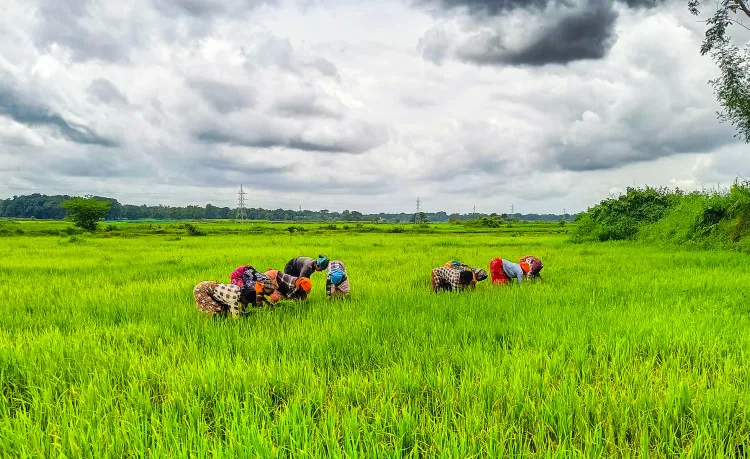How Has India Supported Farmers with Policy Aid and Market Protections?

Synopsis
Key Takeaways
- India's support includes comprehensive crop insurance.
- Policy initiatives aim to stabilize rural incomes.
- Minimum Support Prices help secure fair pricing.
- Digital payment systems enhance accessibility for farmers.
- Future strategies focus on productivity and sustainability.
New Delhi, Oct 11 (NationPress) In light of global trade disruptions, India has taken significant steps to support its farmers through robust policy initiatives and market protections, as highlighted in a media report.
During the previous fiscal year, the nation aimed to stabilize rural incomes, facilitate planting decisions, and ensure long-term agricultural resilience, according to a recent article published in Vietnam Times.
Through various crop insurance schemes, India provided protection to its farmers against adverse weather, pest invasions, and market price fluctuations.
The government’s initiative, “Pradhan Mantri Fasal Bima Yojana (PMFBY)”, along with related weather-indexed programs, is set to continue through 2025–26, ensuring substantial budget allocations for prompt claim settlements and extensive coverage, as the report indicates.
These schemes not only lessen the risks that could lead to forced sales and underinvestment, but also empower farmers to embrace enhanced seeds and environmentally sustainable practices.
The report also noted that practical advancements, such as accelerating payout processes and utilizing digital payments for swift beneficiary access, greatly benefited farmers.
“The collaboration between state and central authorities on procurement and payments aims to enhance efficiency, minimizing losses and guaranteeing that farmers receive the full benefits of insurance and support disbursements,” the report stated.
“Quick and dependable payouts build trust in formal programs, diminish reliance on expensive informal loans, and assist in stabilizing consumption within rural economies,” it further explained.
Moreover, guaranteed pricing and procurement initiatives have bolstered farm incomes.
Despite fluctuations in global commodity markets, the Minimum Support Prices (MSP), which are determined annually, and the procurement systems have played a crucial role in stabilizing the agricultural landscape.
The government also scaled up efforts to address localized shocks by implementing state-level relief strategies.
Measures such as irrigation subsidies, waiving interest on water fees, and expanding procurement centers for essential crops have directly lowered farmers’ operational costs and enhanced net profits, according to the report.
These localized interventions, paired with national insurance and pricing support, alleviated immediate financial pressures, allowing farmers to sustain productive investments.
“Looking ahead, India’s positive trajectory relies on three interlinked pillars: ensuring downside protection (insurance and timely payouts), guaranteeing fair prices (MSP and procurement), and enhancing productivity and resilience (climate-smart technologies and infrastructure),” the report concluded.
Such foundational elements will not only secure current incomes but also equip farmers for greater returns in the future.










